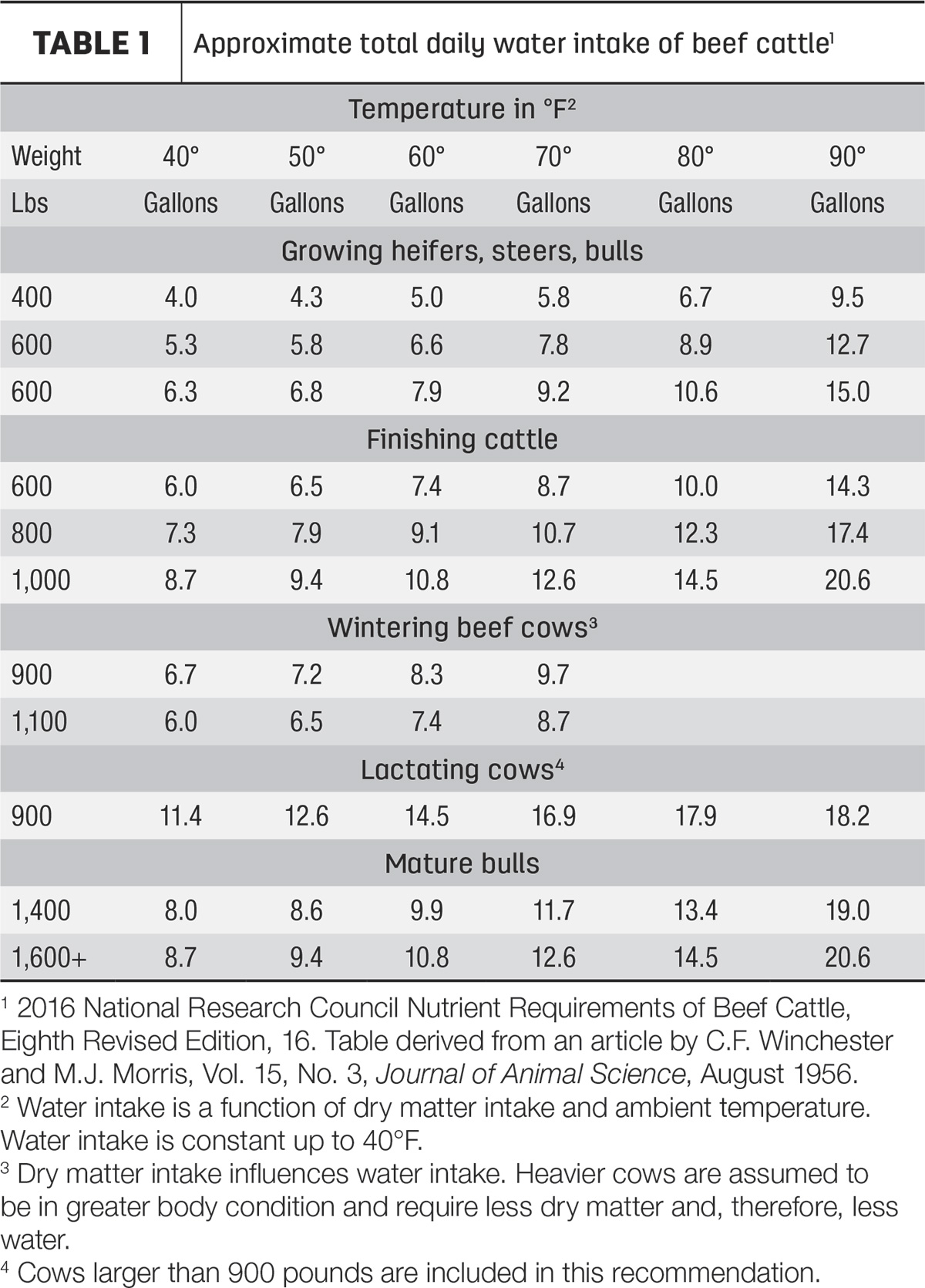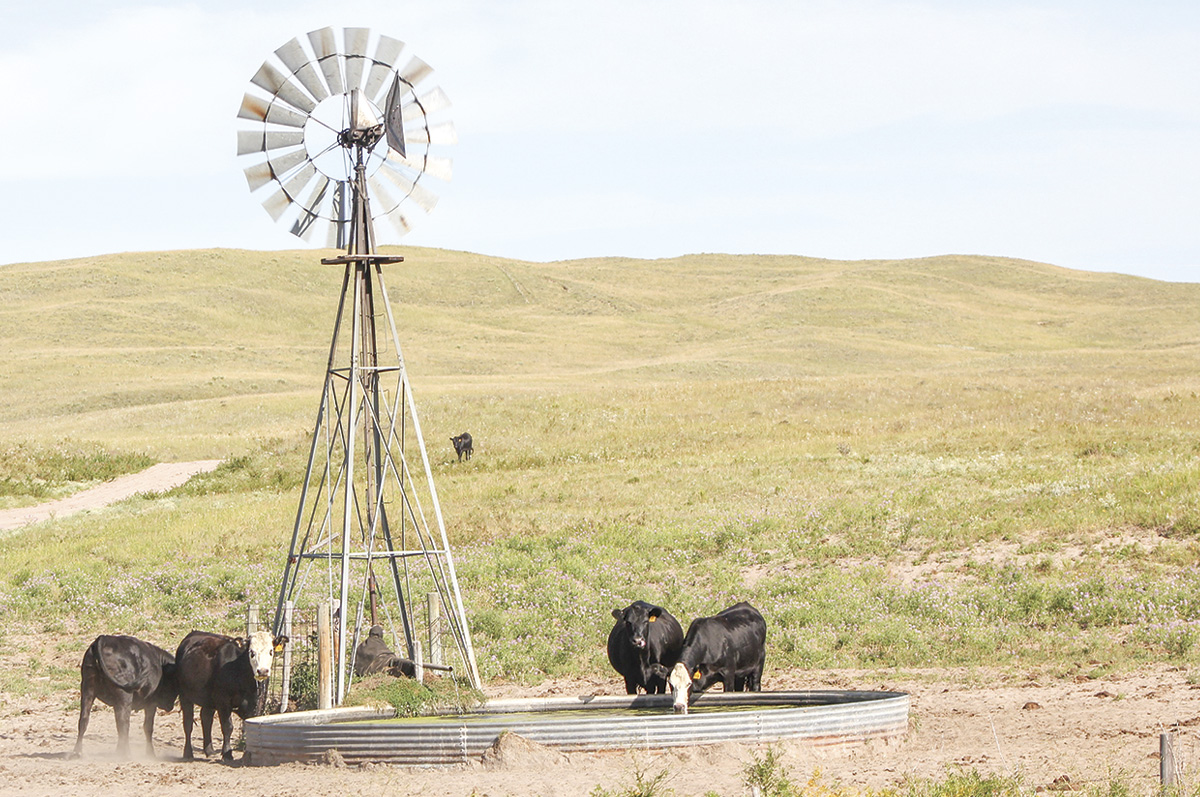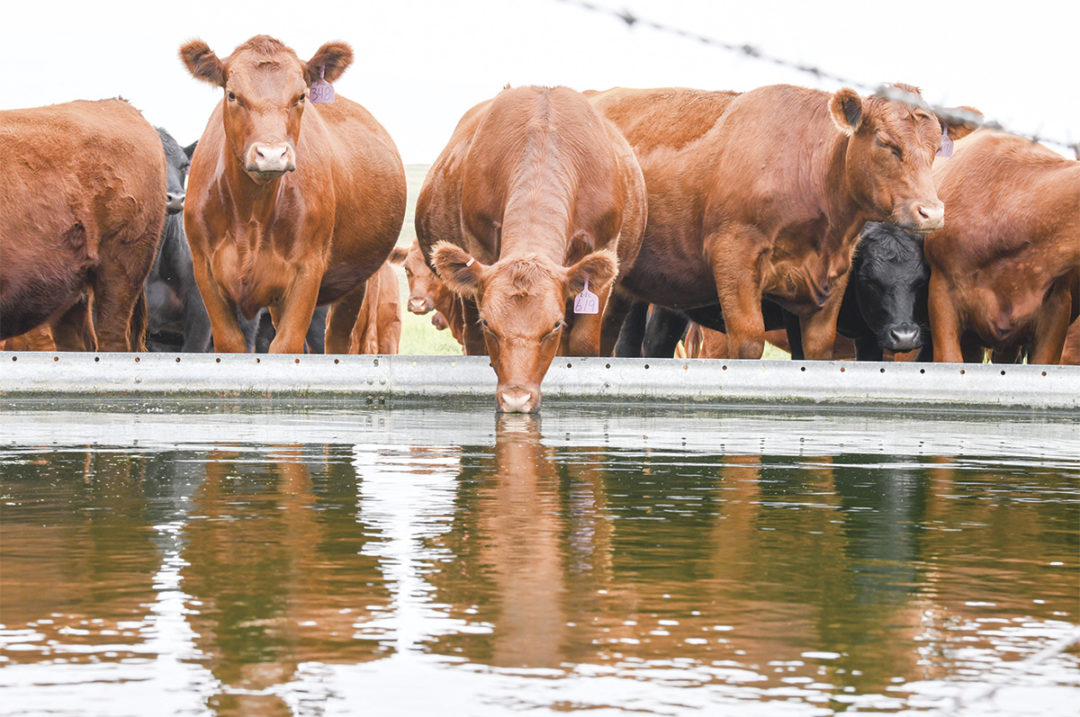Have you ever had an abundance of grass in your pastures but no water for your cattle? With cattle water, prior maintenance and planning can help with ensuring that you always have sufficient water. As you design and develop a watering system for your cattle, make sure you have adequate capacity to meet the water requirements of all cattle. Considerations include pasture size, number and class of cattle, tank height and walking distance to water.
An important part of their diet
The importance of water to beef cattle is often overlooked. Diets are balanced for carbohydrate (energy), protein, vitamins and minerals so cattle can achieve a desired level of performance, but cattle have a requirement for water too, and animal performance can be affected by water intake. In fact, of these nutrients, water is most critical. The minimum requirement of cattle for water reflects the amount needed for body growth and fetal growth or lactation, to replace what is lost by excretion in urine, feces or sweat, or by evaporation from the lungs or skin. Anything influencing these needs or losses will influence the water needs of livestock.
Under conditions of restricted water intake, an animal may concentrate its urine by reabsorbing a greater amount of water than usual. While this capacity for urine concentration is limited, it can reduce the water requirement. When an animal consumes a diet high in protein or in salt, or containing substances having a diuretic effect, the excretion of urine increases and there is an increased water requirement.
The amount of water lost through evaporation from the skin or lungs is important and, in some cases, may even exceed what is lost in the urine. If the environmental temperature and/or physical activity increases, water losses through evaporation and sweating increase.
A number of factors interplay and make water requirements and needs difficult to assess. Because feeds themselves contain some water and the oxidation of certain nutrients in feeds produces water, not all the water needs must be provided as drinking water. Feeds such as silages, greenchop or pasture are usually high in moisture, while grains and hays are low. When cattle consume feeds high in water content, water intake is reduced. High-energy feeds produce more metabolic water compared to low-energy feeds. Fasting animals or those on a low-protein diet may generate water from the destruction of body protein or fat, but this is of minor significance.
Water needs are influenced by environmental temperature, class of livestock and weight. Water needs increase as temperature increases. Lactating cows have greater needs than nonlactating cows. Bulls have a greater daily water requirement than nonlactating cows. This is a function of weight. As cattle get heavier, daily water intake increases.
The 2016 Nutrient Requirements of Beef Cattle lists the estimated water requirements for cattle in different production stages at different daily temperatures (Table 1).

A University of Georgia publication lists estimated daily water requirements for cattle when the daily high temperature is 90ºF. The data suggest a growing animal or a lactating cow needs approximately 2 gallons of water per 100 pounds of bodyweight. A nonlactating cow or bull needs 1 gallon of water per 100 pounds of bodyweight. As an example, spring-calving cows will need close to 20 to 24 gallons of water per day for themselves and another 5 to 10 gallons for their calf in these high-temperature environmental conditions. Remember, some of the water will come from the feed they eat, and vegetative grass is high in water content. Also, for the nursing calf, a portion of the daily water needs will come from the dam’s milk.
Water quality
Nitrates, sulfates and blue-green algae can affect water quality. A safe level of nitrate nitrogen (NO3N) in the water for cattle is less than 100 parts per million (ppm). The sulfate upper limit for calves is less than 500 ppm (167 ppm sulfur as sulfate). For adult cattle, the upper limit is less than 1,000 ppm (333 ppm sulfur as sulfate). Stagnant water, lakes and ponds are ideal environments for the growth of blue-green algae, which can be toxic to cattle. When in abundance, blue-green algae gives the water the appearance that someone has dumped a bucket of light green or turquoise paint in the water. Signs of blue-green algae poisoning are diarrhea, vomiting, lack of coordination, labored breathing, seizures, convulsions and possibly death.
Other problems that we may find with water are high or low pH, or excessive levels of sulfates, hydrogen sulfide, iron and magnesium. Many times these substances in water cause an “off flavor” and impact water intake.

Photo provided by Troy Walz.
When cattle are drinking out of ponds or dams, water quality should be monitored. If the presence of algae or drought conditions impacts water quality, collecting a sample of the water and submitting it to a lab for analysis can help to ensure that the water is safe for consumption. Water in livestock tanks and troughs should be checked as well. Algae and moss can grow in these tanks, reducing water intake and potentially impacting cattle health and performance. Warm temperatures and sunlight aid in the growth of algae.
Keeping cattle from urinating or defecating in a tank or pond will also help with keeping water clean. Providing restrictions such as a railing or fence that allows cattle to drink but keeps them from wading in will help keep nutrient sources for algae growth out of the tank or pond. Routinely cleaning tanks and utilizing a copper sulfate treatment or chlorine treatment can help keep tanks free from moss and algae. As you design and develop a watering system for your cattle, make sure you have adequate capacity to meet the water requirements of all cattle. Considerations include pasture size, number and class of cattle, tank height and walking distance to water.
Providing clean, fresh water is always a goal for the cattle producer. Simply stated, the higher quality the water, the better it is for the animal and the better the gains. Water intake is influenced by water quality, and adopting management strategies that improve water quality will benefit cattle health and performance.
References omitted but are available upon request by sending an email to the editor.









